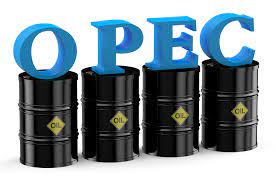The bearish positioning of oil traders in recent weeks has led to a sell-off on the market as speculators reduced bullish bets amid resurfaced concerns about the global economy and oil demand.
The bullish sentiment from September, when the market was focused on the OPEC+ supply cuts, gave way to a bearish mood in the latter part of October and so far in November, as concerns about a supply crunch were replaced by renewed fears of weakening demand.
As a result, the bullish positioning of the fund managers in the two most traded crude futures contracts, Brent and WTI, slumped to a four-month low last week.
OPEC and its leader and top producer, Saudi Arabia, insist demand remains robust and the oil sell-off from $90 to $80 a barrel Brent in past weeks was exaggerated amid “overblown” concerns about demand.
The excessive piling of bearish positions could prompt Saudi Arabia to roll over its extra production cut of 1 million barrels per day (bpd) – or at least part of it – into 2024.
Currently, the voluntary cut from the Kingdom, and the pledged 300,000 bpd export reduction from Russia, are set to run until the end of 2023.
But with oil sliding to $80, both OPEC+ producers could attempt another run-up in prices by extending the cuts. Considering the seasonally lower oil demand in the first quarter of any year, an extension of the extra cuts to supply could be in the cards.
Traders have now been net sellers of the six most important petroleum futures contracts in five of the past six weeks, according to data from exchanges compiled by Reuters market analyst John Kemp.
The combined net long—the difference between bullish and bearish bets—in WTI and Brent slumped to a four-month low at 312,000 contracts in the week to November 7, Ole Hansen, Head of Commodity Strategy at Saxo Bank, said.
The net long position in the two most traded contracts has now plunged by 44% since September “when the focus on tight markets led by Saudi production cuts peaked before demand worries began taking over,” Hansen noted.
“Given the accelerated price collapsed following November 7, it is fair to speculate positions have been reduced even further, potentially creating the foundation for another bounce, especially after WTI and Brent found support below $75 and $80 respectively,” Hansen said.
While traders continue to be more bearish on oil, OPEC and Saudi Arabia say the market move down was exaggerated and demand is robust, including a record-high demand in China.
OPEC Secretary General Haitham Al Ghais said last week that the economy “is still doing quite well” despite the challenges. Al Ghais expressed optimism about global oil demand less than three weeks before the ministers of the oil producers in the OPEC+ alliance meet on the weekend of November 25-26 for a key production policy decision.
Then, this week, OPEC said that oil market fundamentals remain strong, with Chinese crude imports set to increase to a new annual record in 2023, dismissing the most recent negative market sentiment as exaggerated.
“Despite the overblown negative sentiment in the market regarding China’s oil demand performance, and global oil market in general, the latest data shows Chinese crude imports increasing to 11.4 mb/d in October, and remaining on track to reach a new annual record high for this year, at around the same level,” OPEC said in its monthly report for November.
Last week, Saudi Arabia’s Energy Minister, Prince Abdulaziz bin Salman, said that oil demand continues to be robust and blamed speculators for the most recent drop in oil prices.
Even the International Energy Agency (IEA) said on Tuesday that “While this more bearish mood may be justified, world oil demand continues to exceed expectations,” and raised slightly its oil demand growth forecasts for both 2023 and 2024.
Commenting on the recent oil price moves, ING strategists Warren Patterson and Ewa Manthey wrote in a Tuesday note, “We believe the scale of the move lower in recent weeks has been extreme. While fundamentals may not be as bullish as initially thought, they are still supportive, with the market likely to be in deficit for the remainder of this year.”
“The surplus we see early next year could even be erased if the Saudis roll over their additional voluntary supply cuts.”

 Iran Energy News Oil, Gas, Petrochemical and Energy Field Specialized Channel
Iran Energy News Oil, Gas, Petrochemical and Energy Field Specialized Channel



